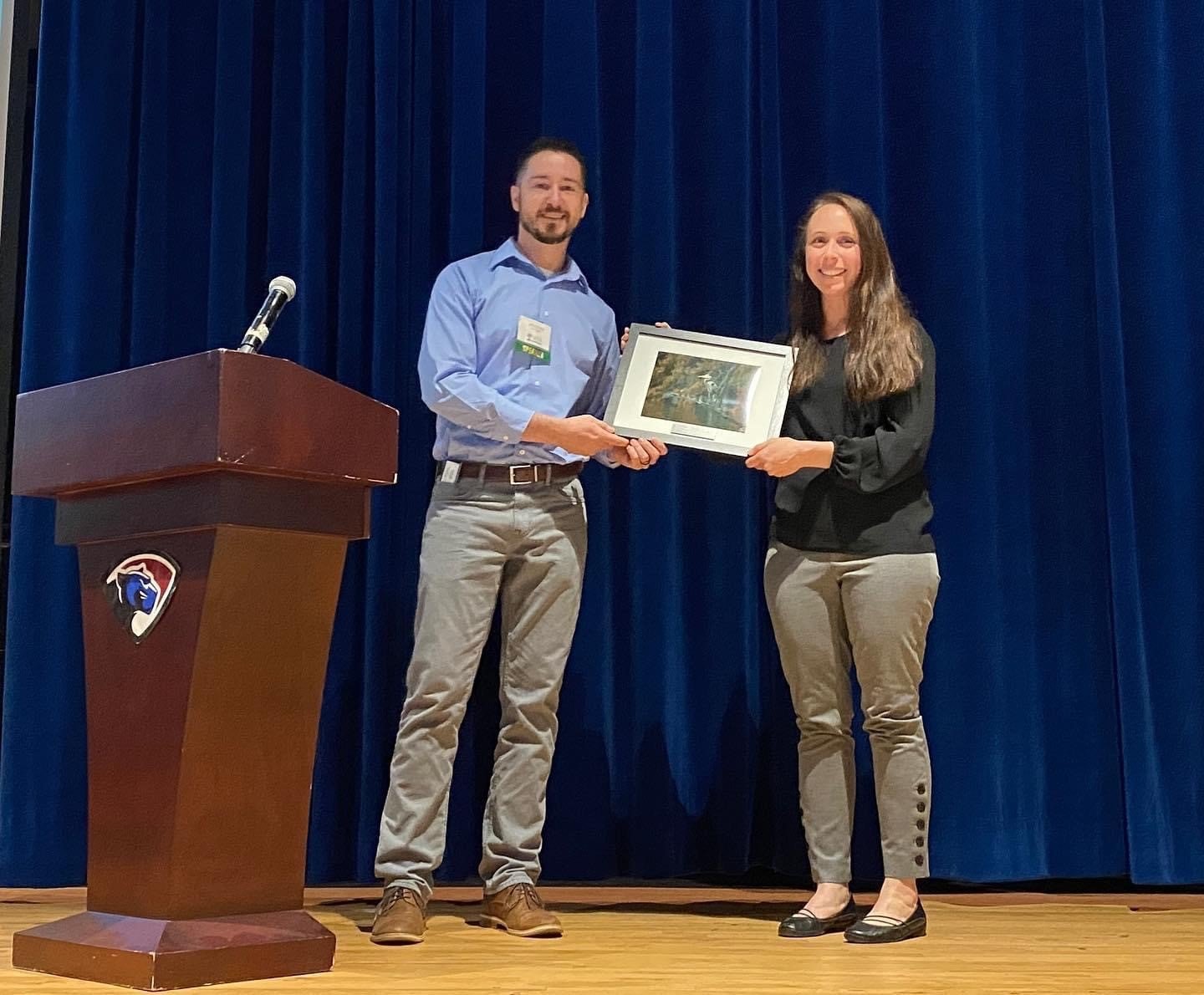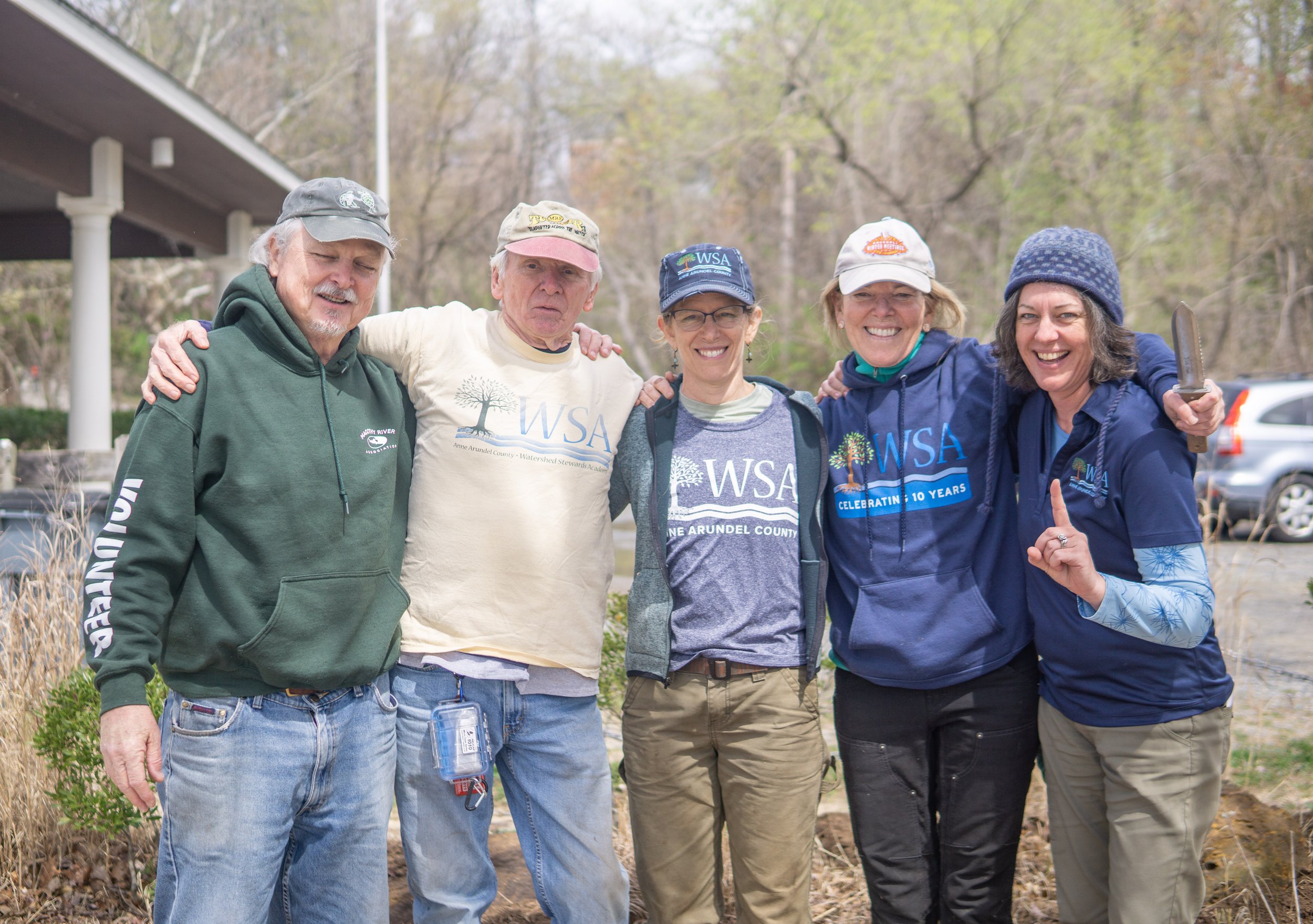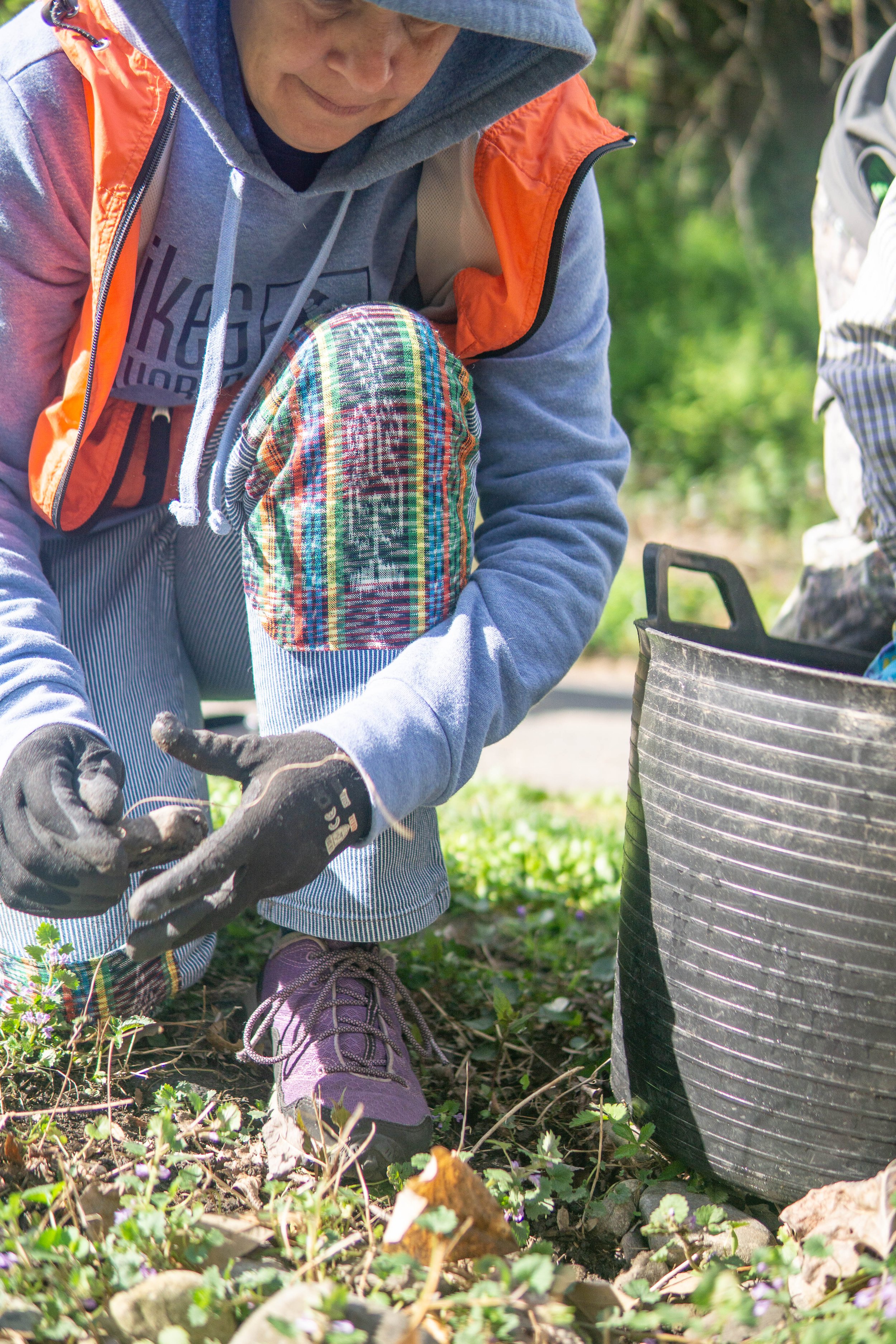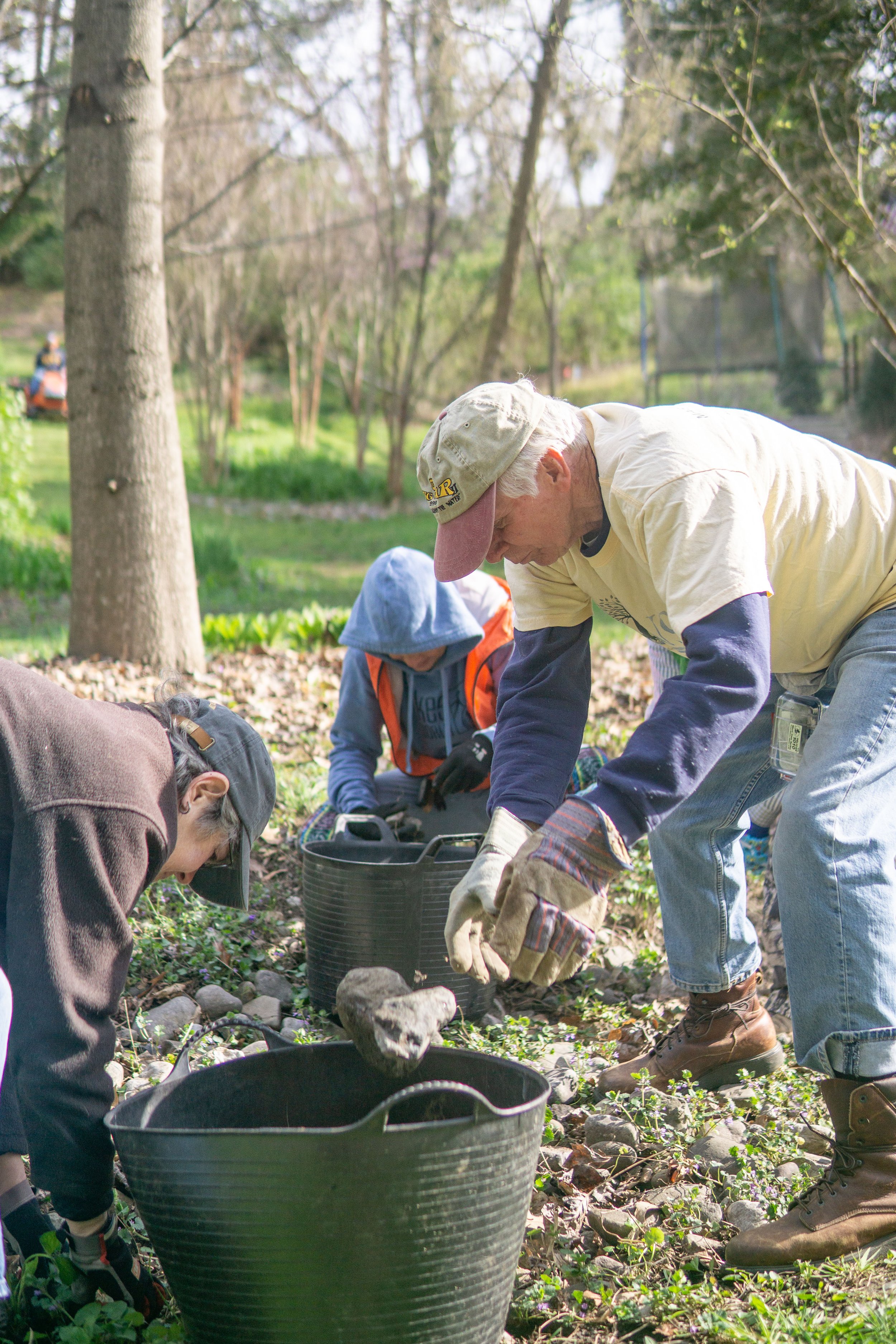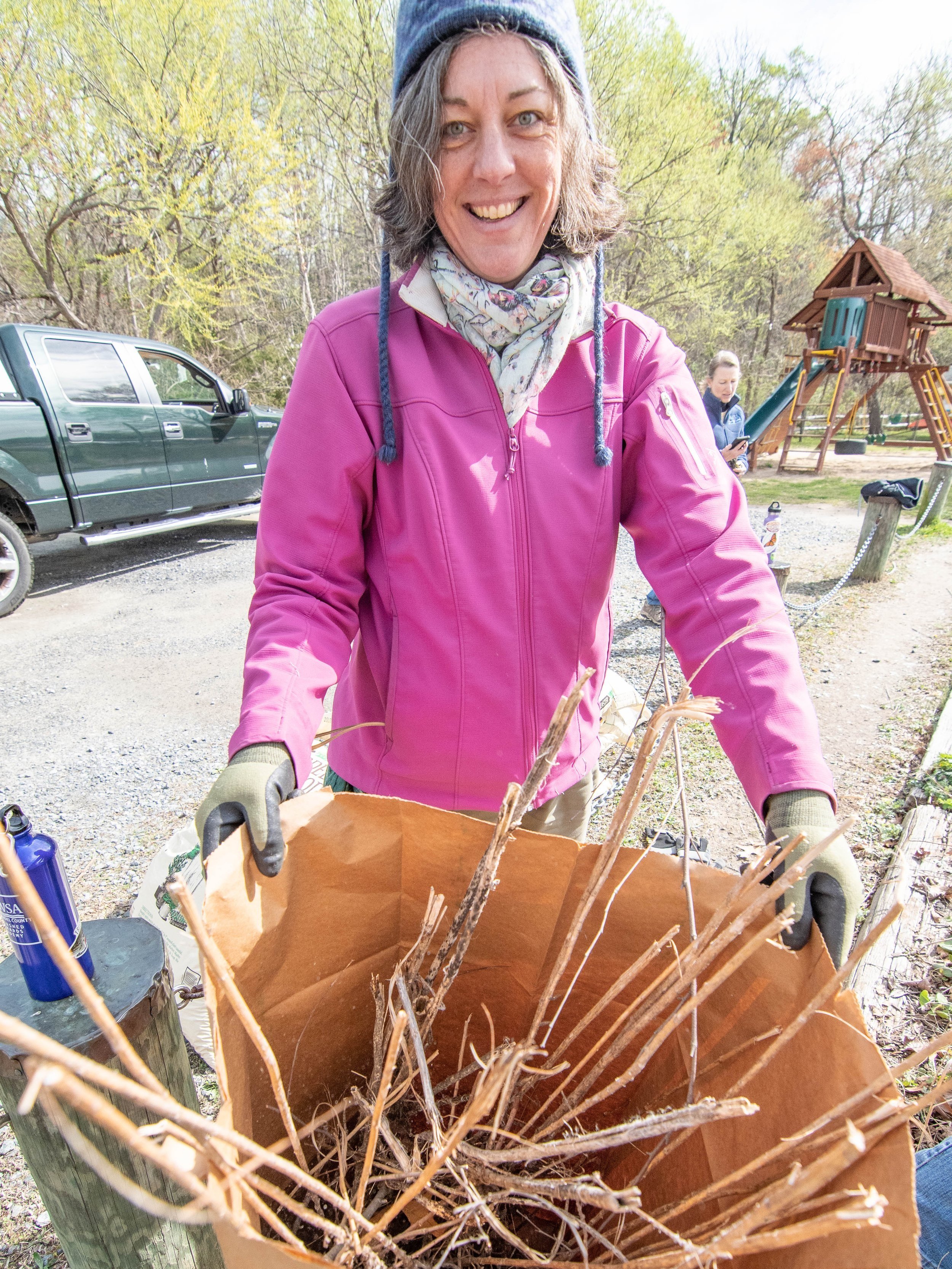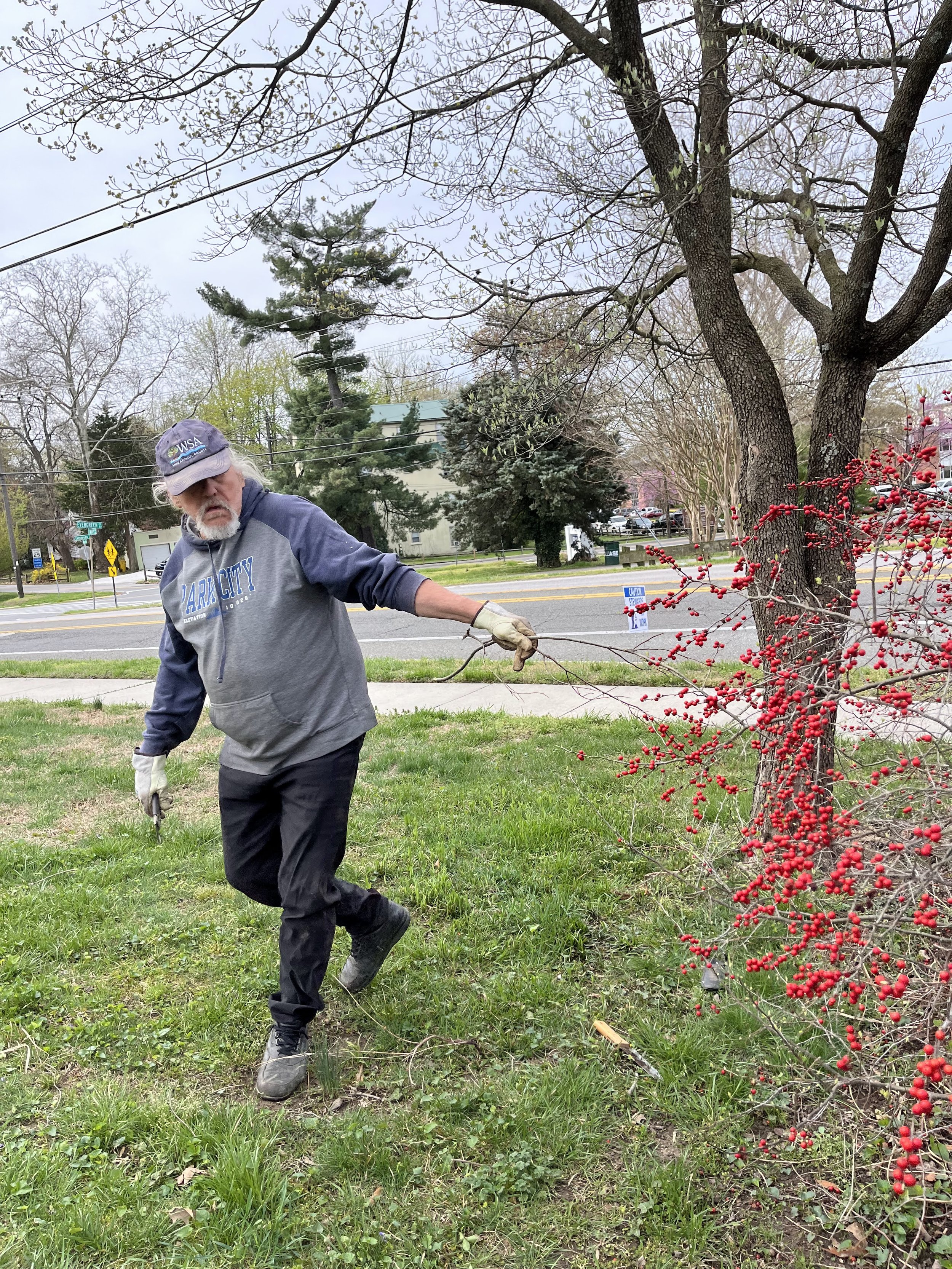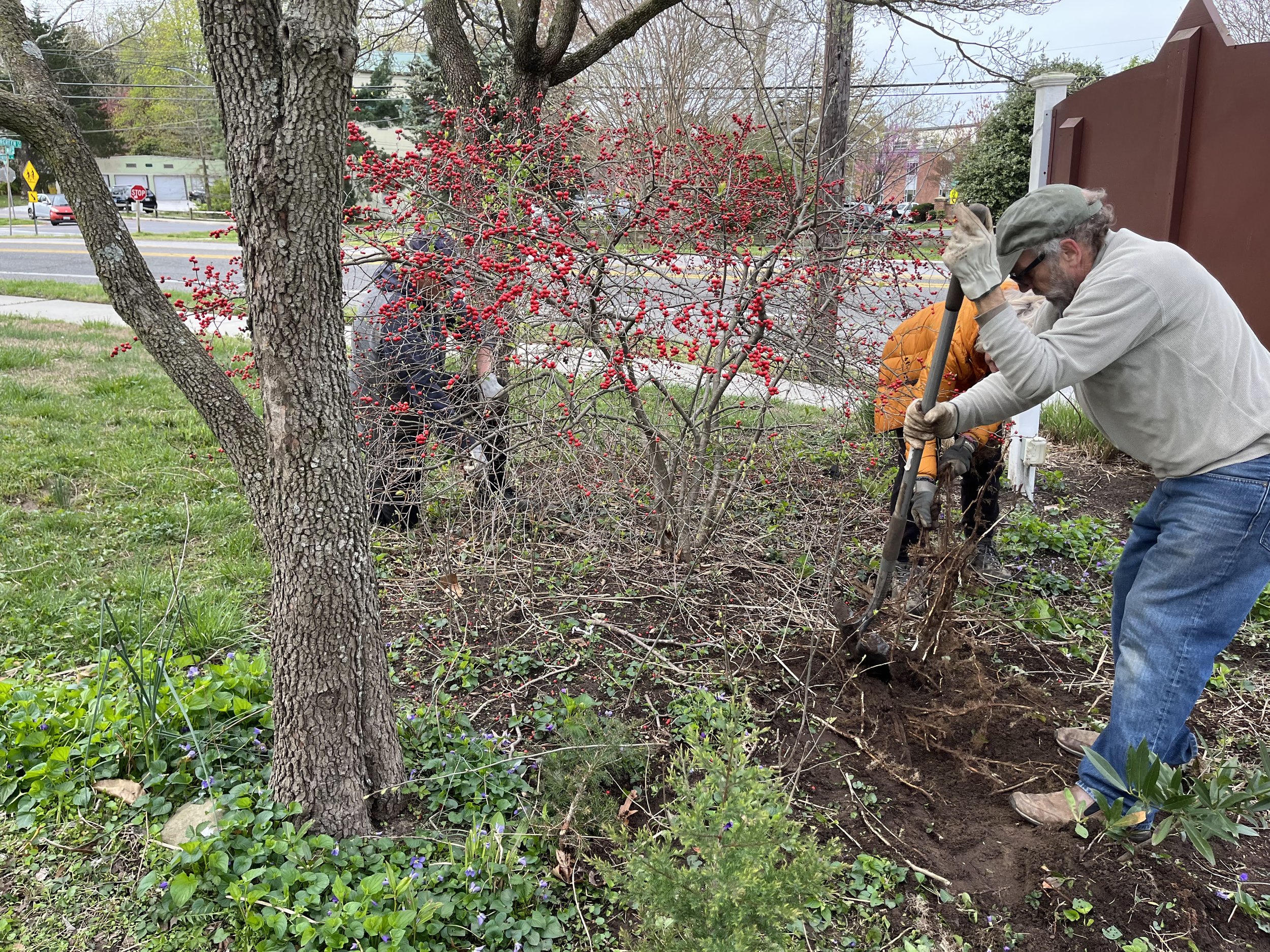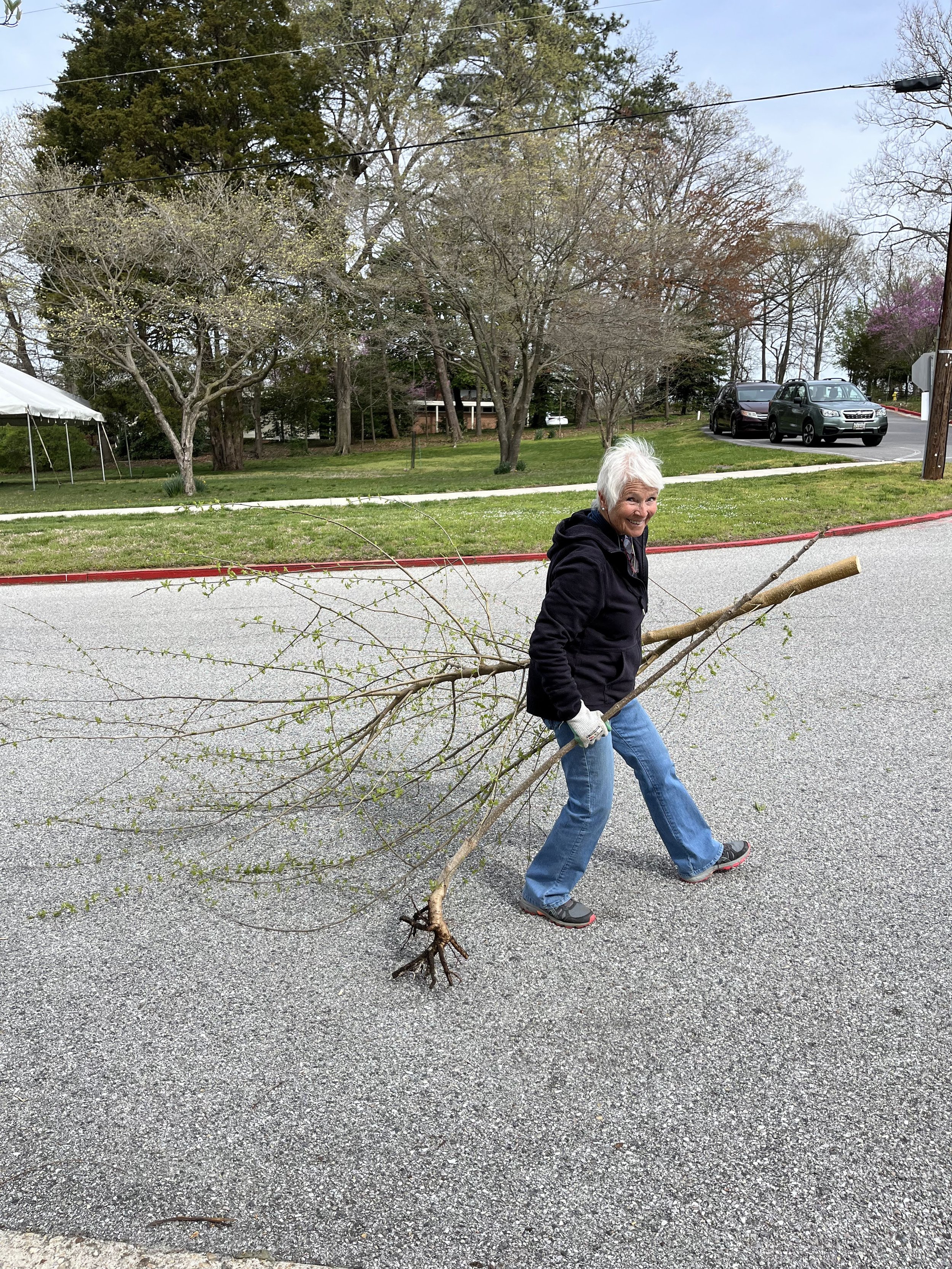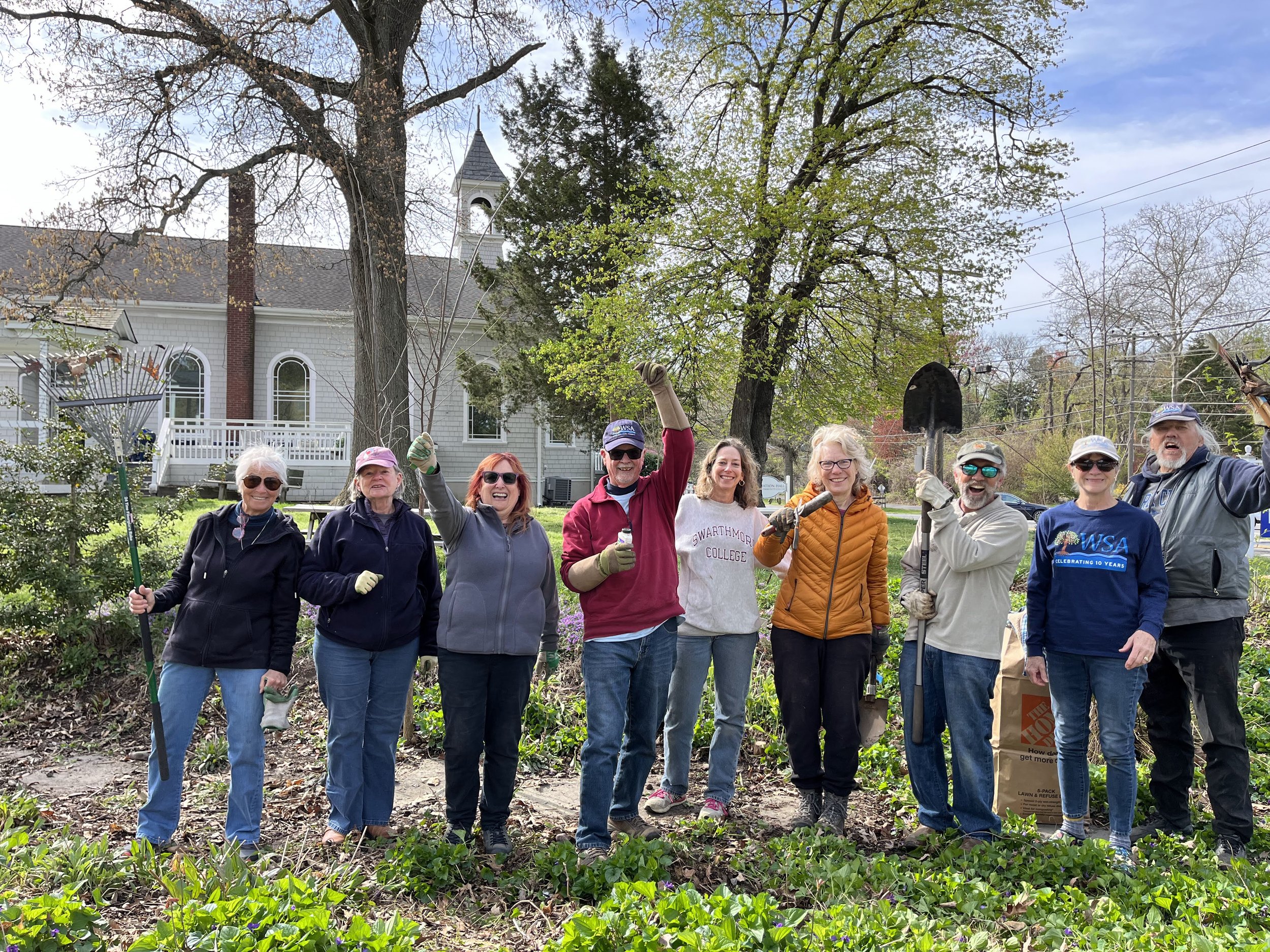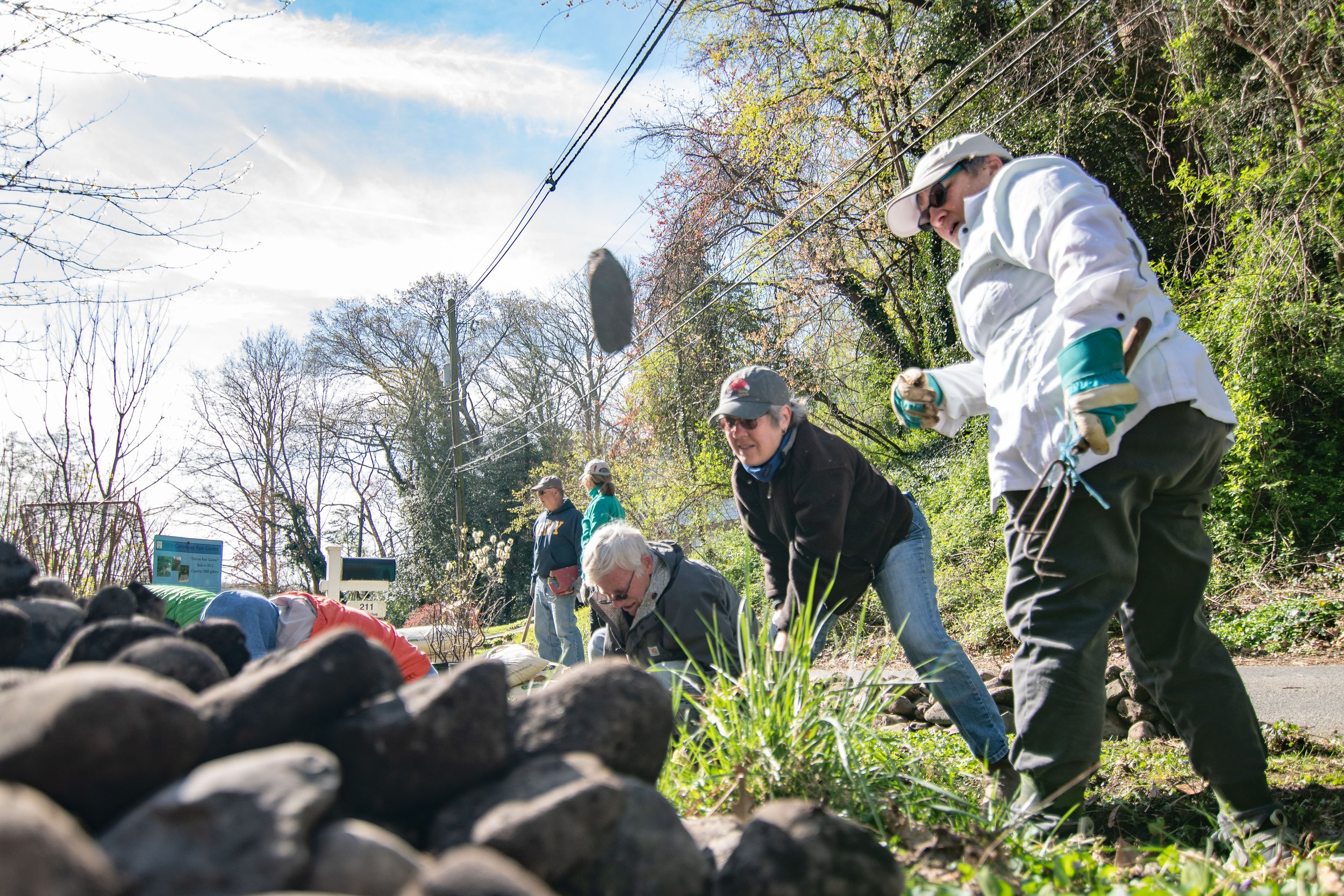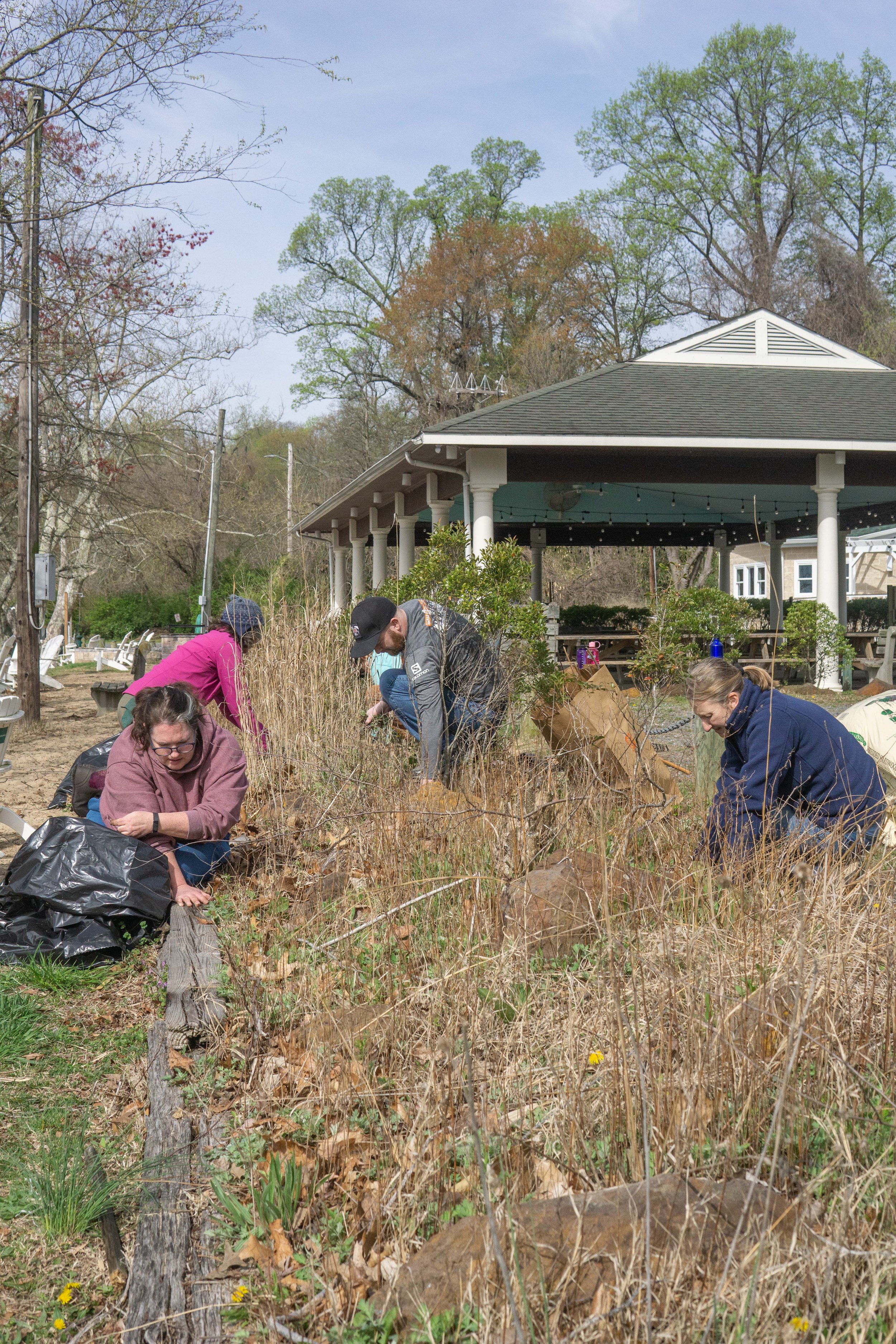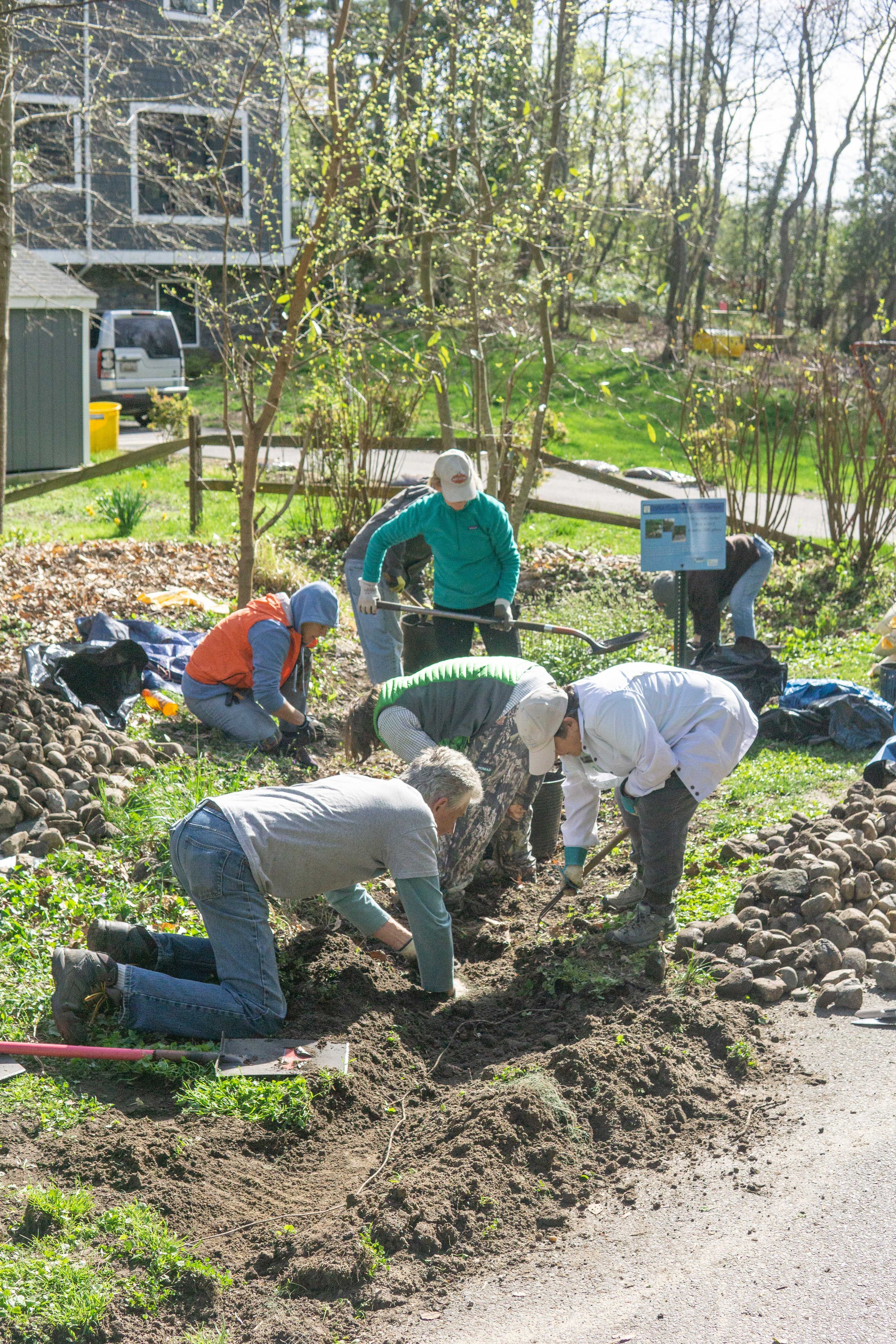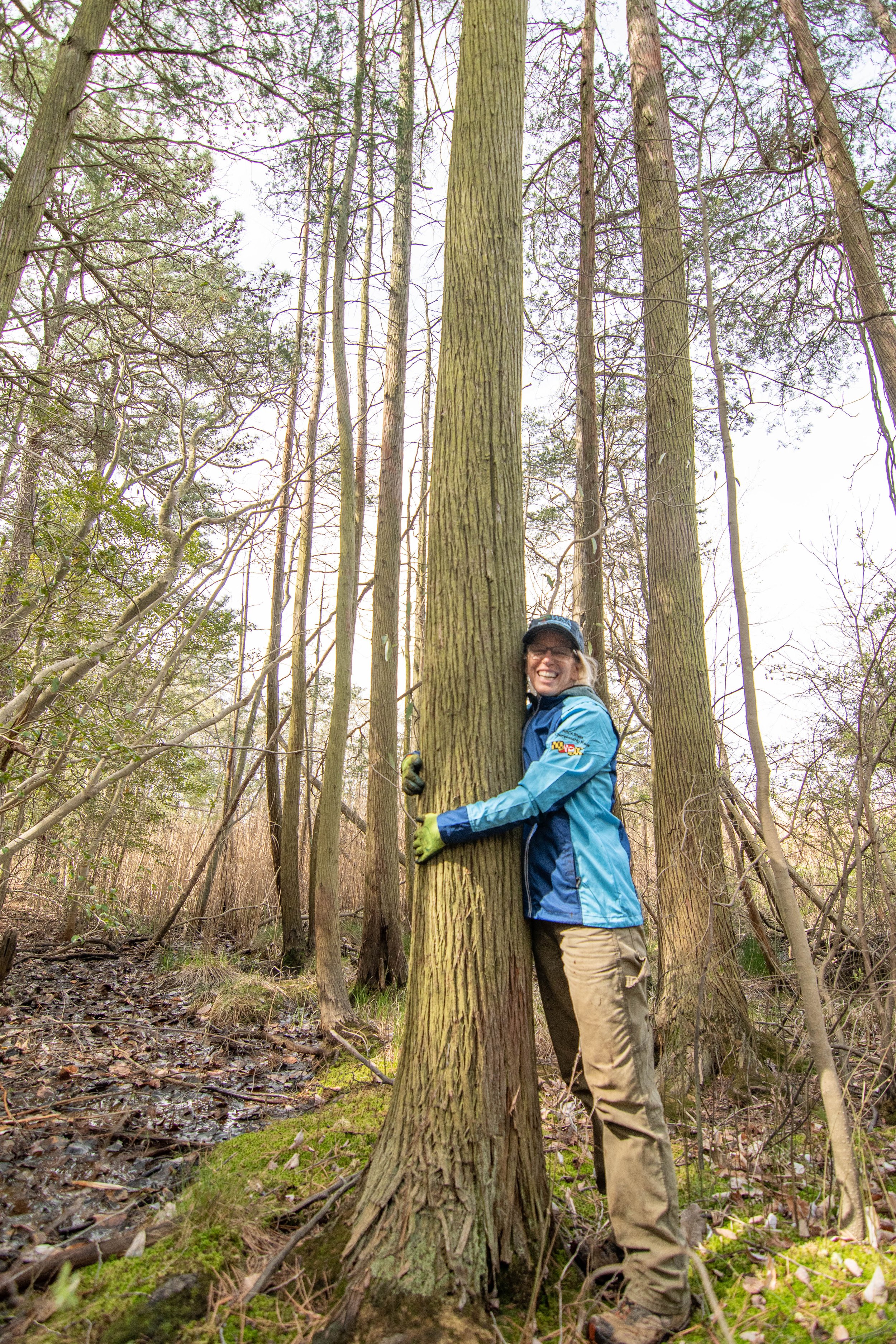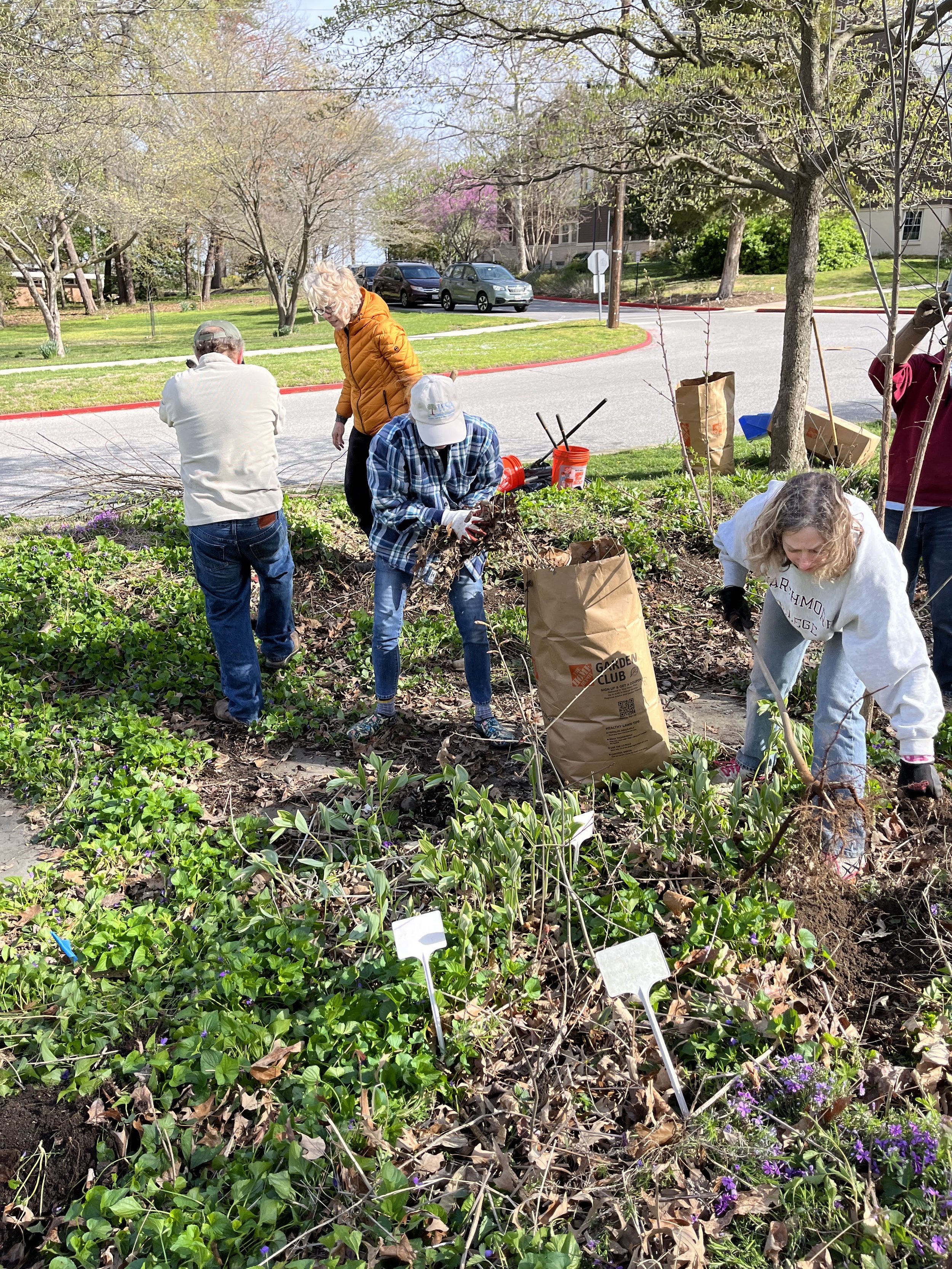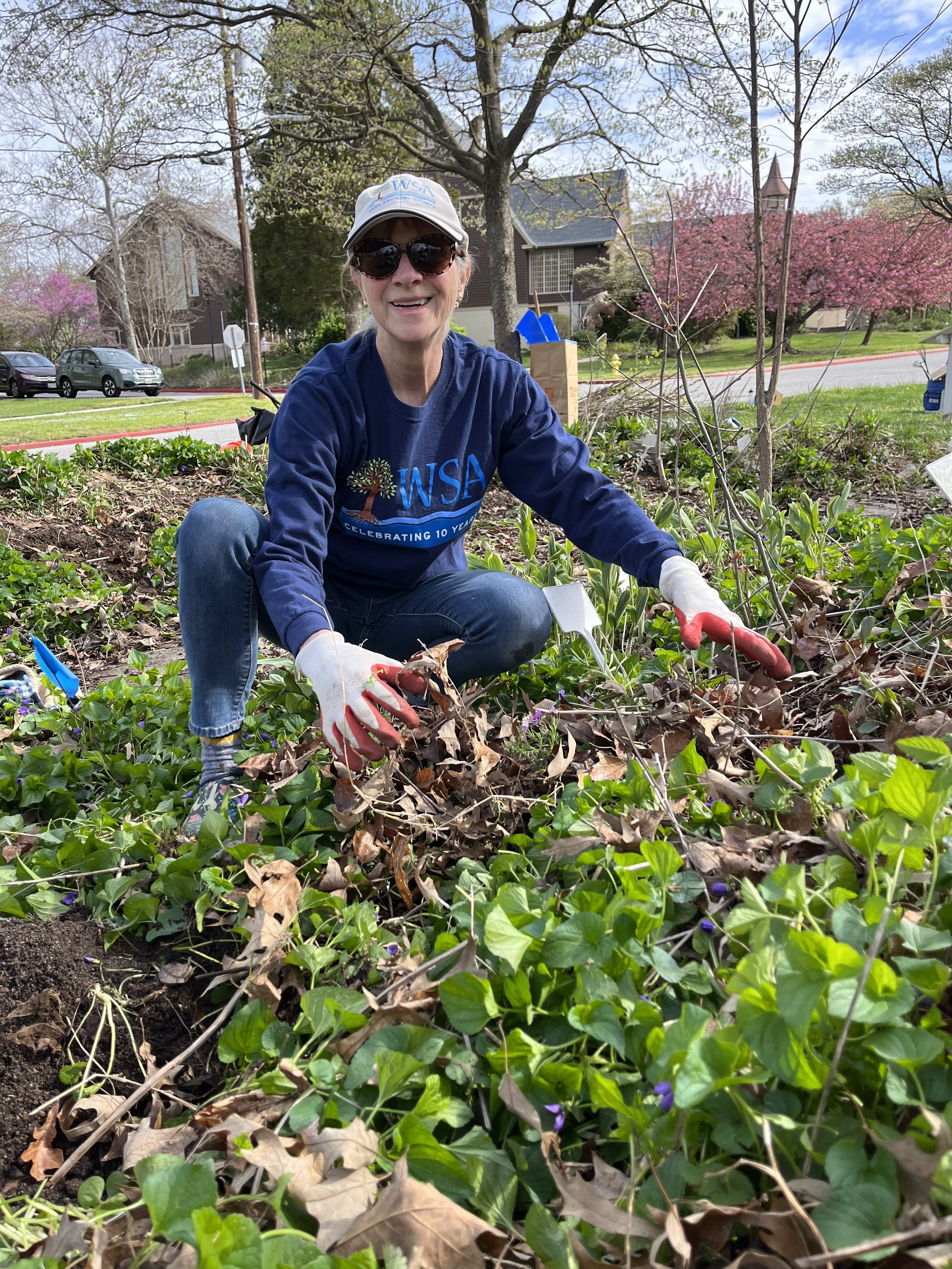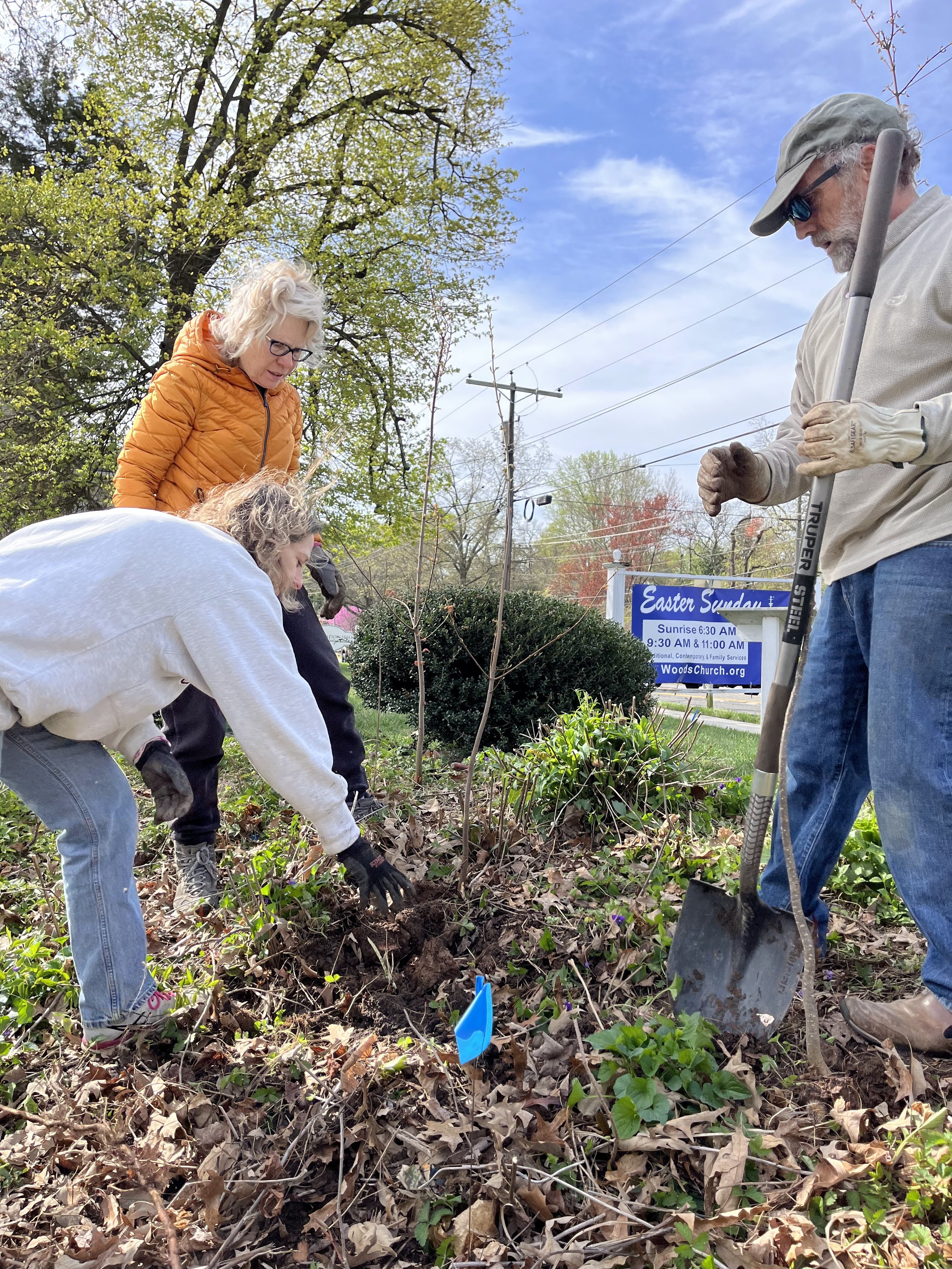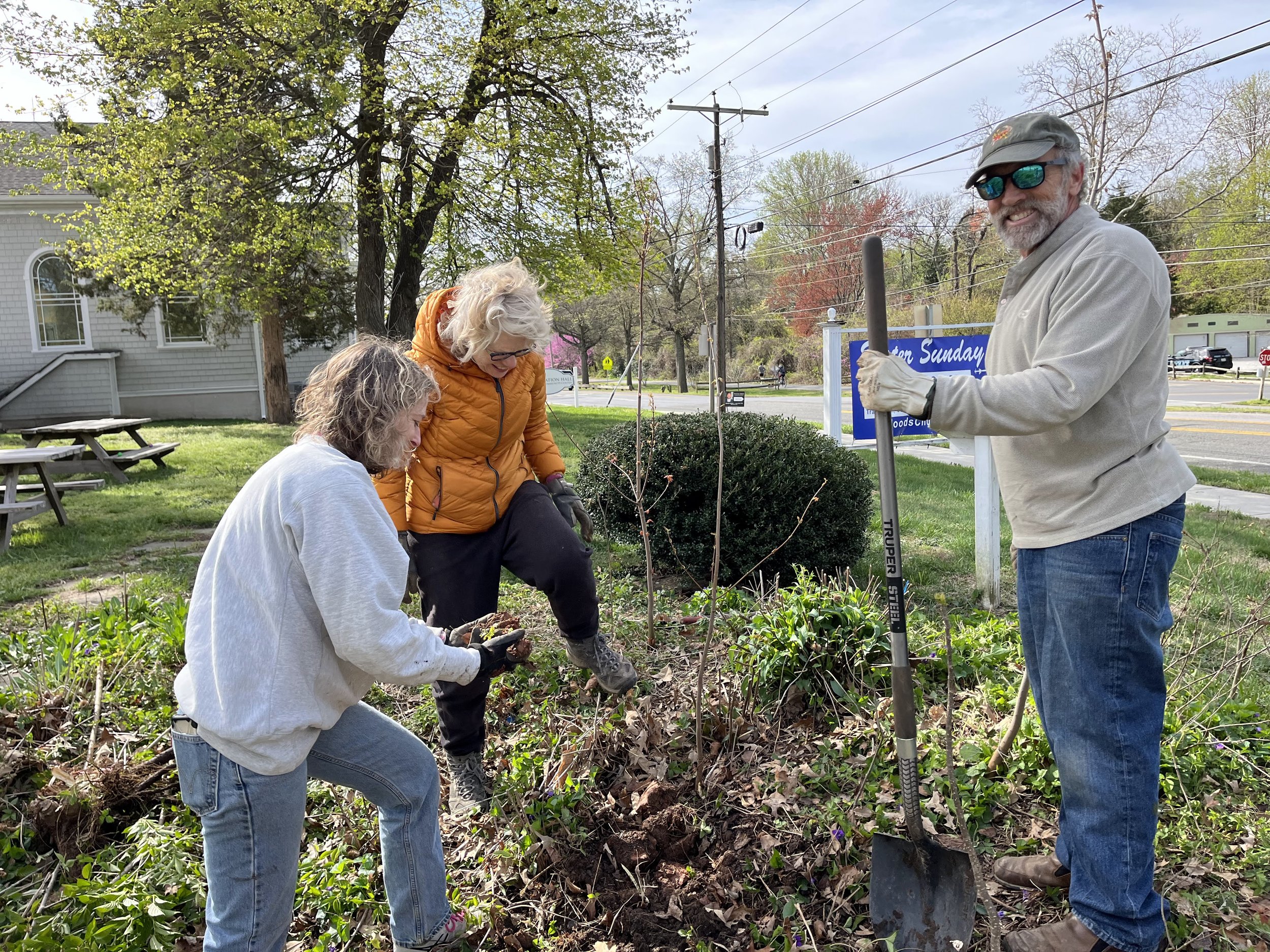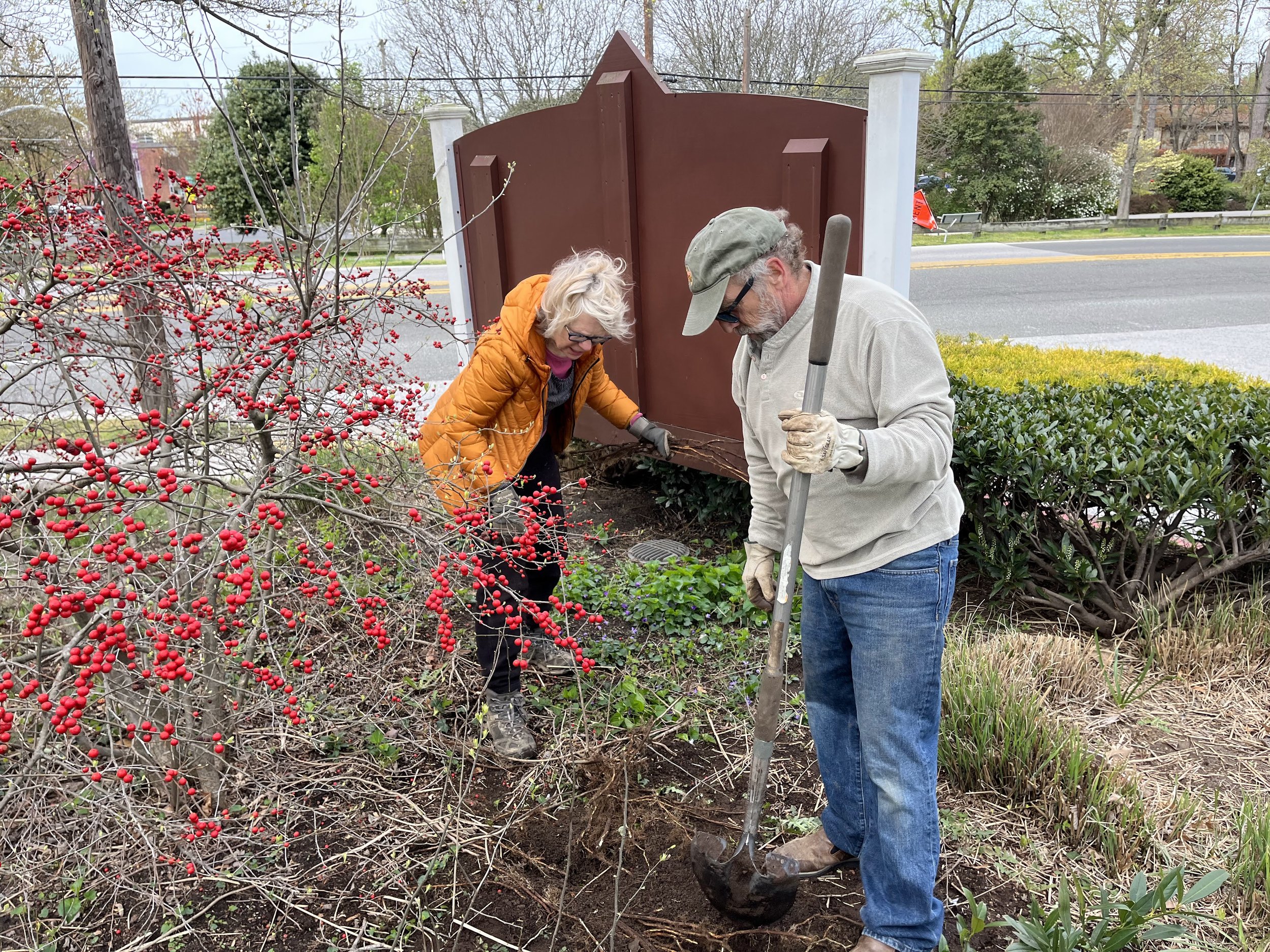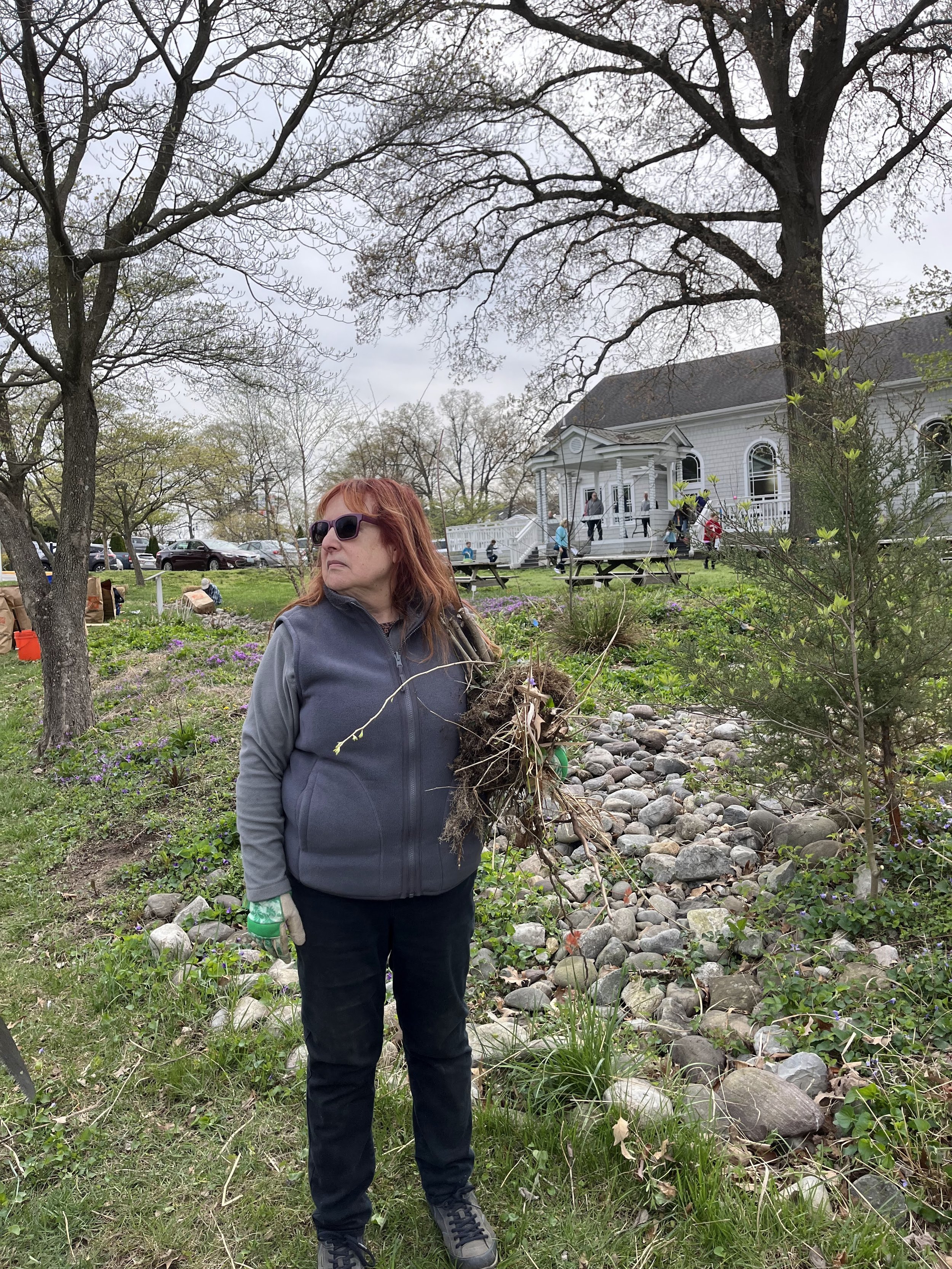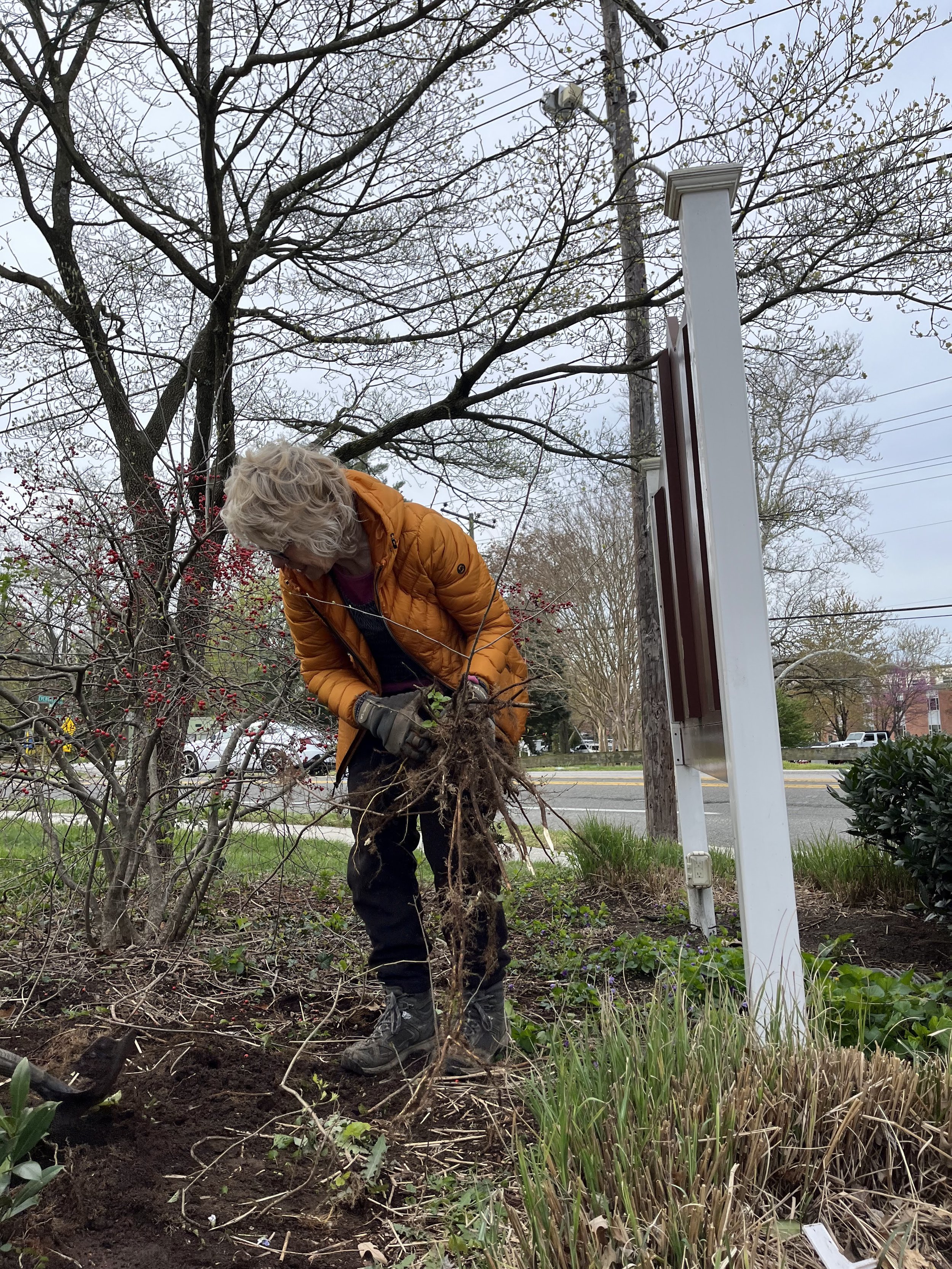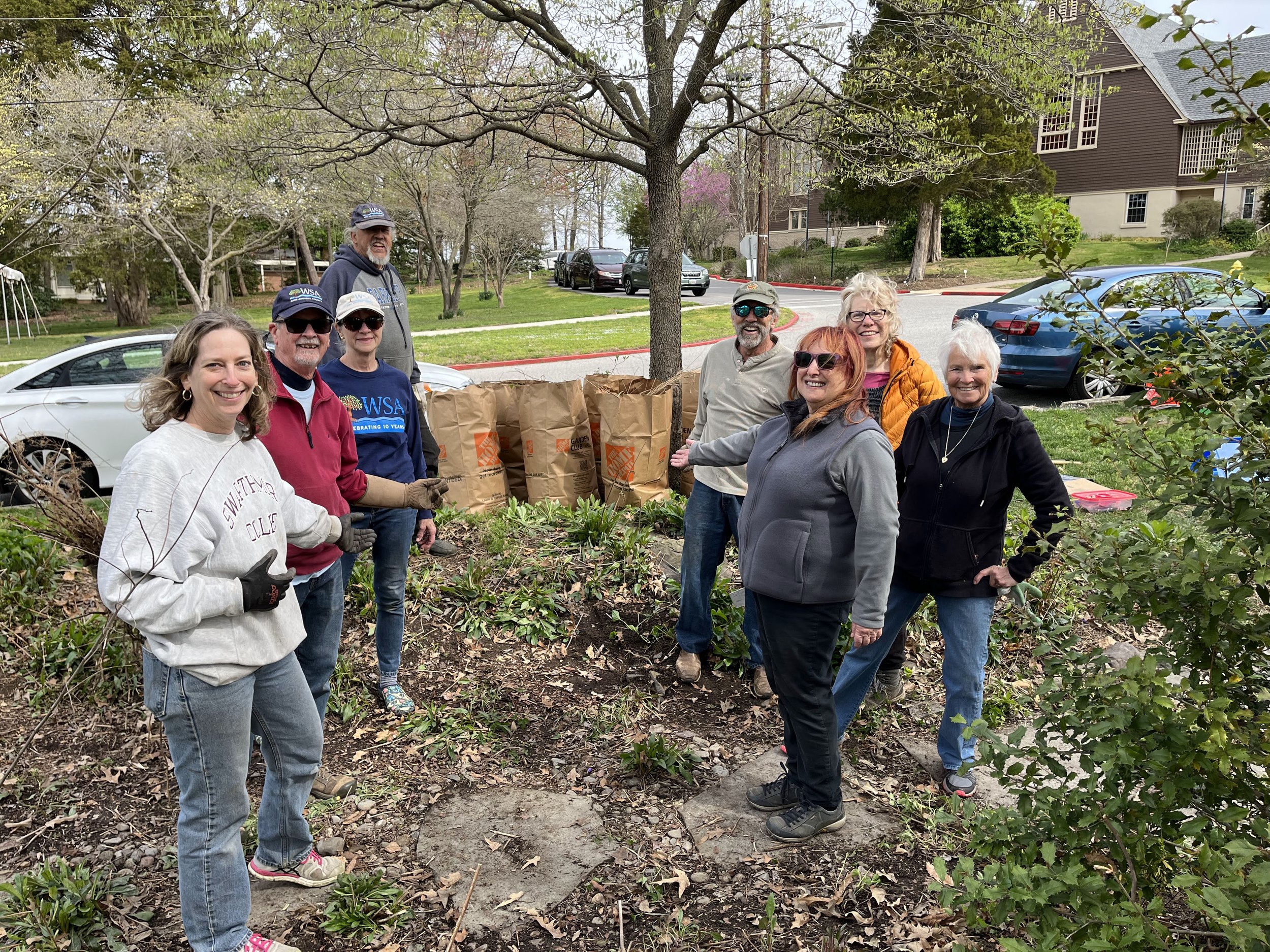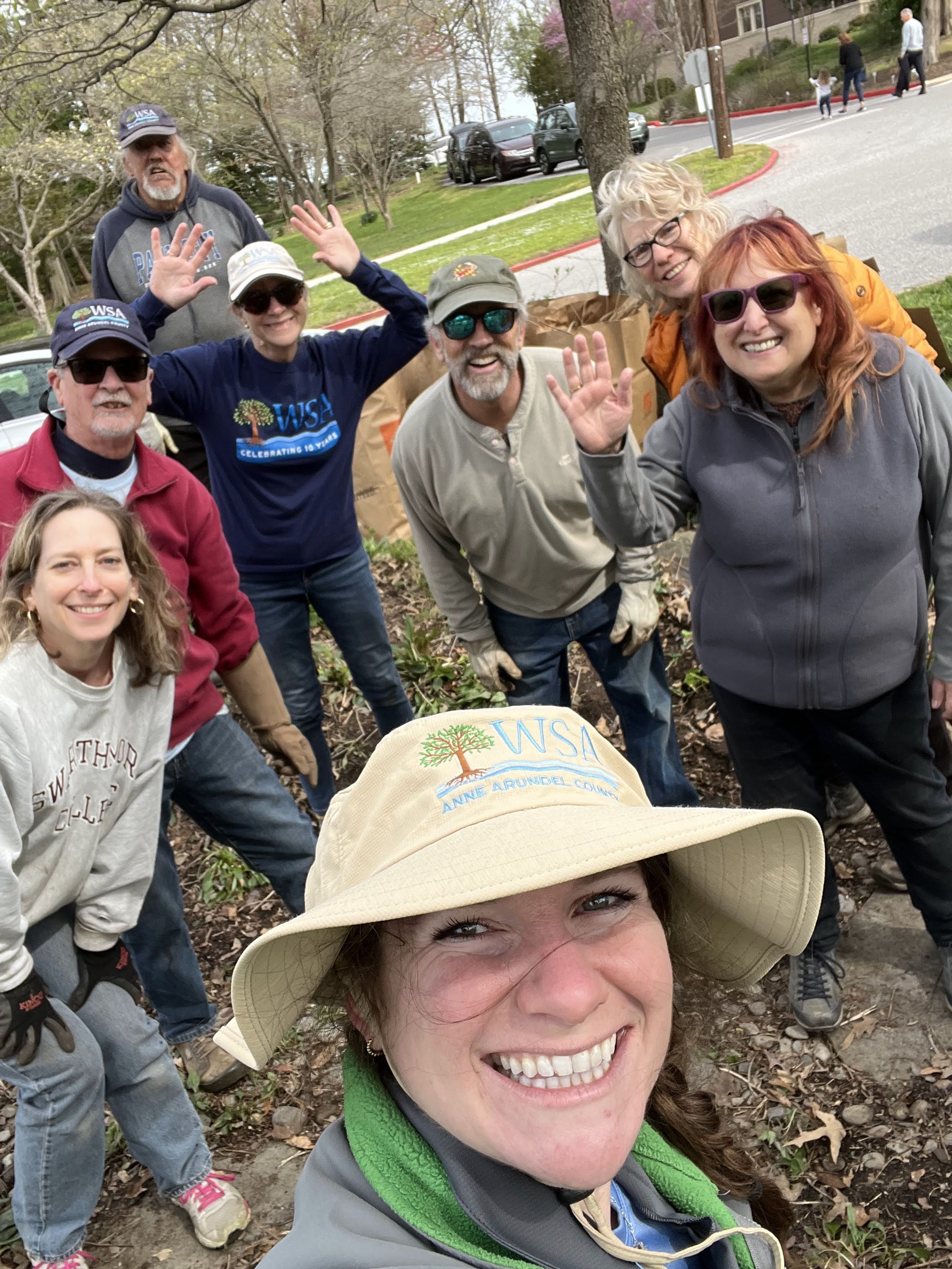Each year Anne Arundel County Watershed Stewards Academy honors volunteer Watershed Stewards and the environmental professionals who support their action for clean water. The Watershed Steward of the Year is awarded to a Steward(s) who excels in engaging their community to reduce pollution. The Consortium Member of the Year is awarded to an environmental professional who makes a significant impact on projects for clean water.
This year, WSA renamed its Watershed Steward of Year Award in honor of the first recipient, Ann Jackson.
ANN JACKSON WATERSHED STEWARDS OF THE YEAR
Candy Dayton, Francesca King, Thom Marston, and Dawn Taft
The Ann Jackson Watershed Stewards of the Year, Candy Dayton, Dawn Taft, and Thom Marston were honored for their dedication to clean water and their leadership in the Anne Arundel Patapsco River Alliance (AAPRA). This generous and committed trio is the backbone of AAPRA. Candy and Dawn co-founded AAPRA when they saw a need to mobilize Watershed Stewards and volunteers in the northern part of the county. AAPRA’s mission is to forge new relationships and engage new Stewards, so that their efforts can be replicated as they work towards healthy, swimmable, fishable creeks and rivers.
Candy Dayton has partnered with Faith Baptist, a church in Glen Burnie where she volunteers her time and is deeply committed to Stewardship and maintenance. Candy implemented a maintenance plan for the rain garden that was so successful she’s now able to put her time into helping others congregations with maintenance. Additionally, Candy leads a Project Clean Stream effort every year, organizing multiple sites in North County.
Dawn Taft has worked extensively with Empowering Believers Church, also in Glen Burnie, on maintenance. With Candy and Thom’s support, Dawn has empowered members of the congregation and community as they work together to maintain their projects. She’s also worked with the Linthcisum Library, and partnered with Candy on many other projects. Dawn is incredibly passionate about maintenance and is always willing to teach others and build their skills and confidence.
When Thom Marston became a Watershed Steward in 2018, he jumped right in and became a leader with AAPRA! Thom has taken the mission of AAPRA to heart and been a key part in connecting with new Stewards of each graduation class. It’s been said that Thom never says no to a request for help, and always has a smile on his face!
This small but mighty organization has a big impact, and it's all thanks to the leadership of these three Stewards. Despite being in a part of the county where WSA has fewer Stewards, Candy, Dawn, and Thom help harness the power of volunteers by building authentic relationships. We love seeing the many ways this trio supports one another and their communities- they are an inspiration to us all!
With their focus on project maintenance, and the number of times it has been said that Ann Jackson seemed to do the work of much more than just one person, we couldn’t have chosen more perfect winners of the newly renamed Ann Jackson Steward of the Year Award.
CONSORTIUM MEMBER OF THE YEAR
Jeffrey Popp and Jennifer Carr
WSA was thrilled to honor Jennifer Carr as the 2023 Consortium Member of the Year. Jennifer has been a valuable partner to WSA in her capacity as the Director of Restoration with Arundel Rivers Federation. Jennifer leads watershed restoration projects ranging from small native plantings to large-scale living shoreline and stream restoration projects. Most recently, our teams have been working together on the St. Mark Project in Hanover. Jennifer is not only an outstanding restoration professional but is also skilled at coordinating partners and other involved parties, providing thoughtful guidance to communities taking on new projects, and thinking creatively about funding opportunities. Perhaps most importantly, Jennifer is skilled at building relationships and trust with the communities she works with. Jennifer is also a certified Watershed Steward and was lucky enough to have the incredible Ann Jackson as one of her mentors.


